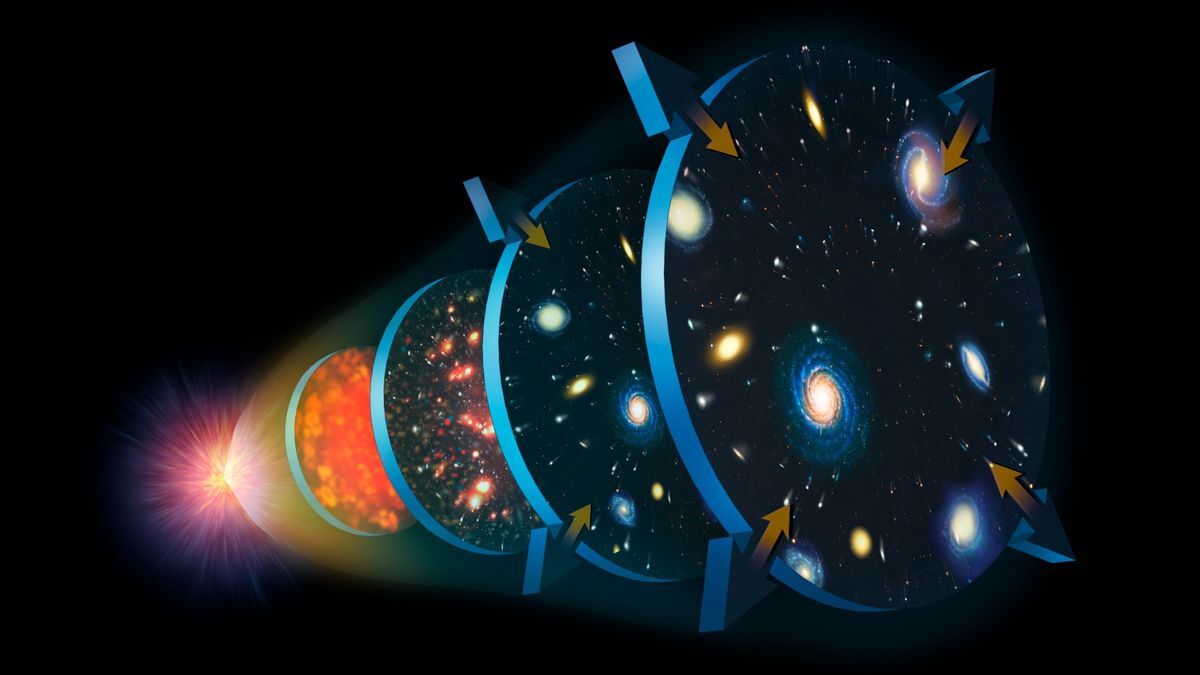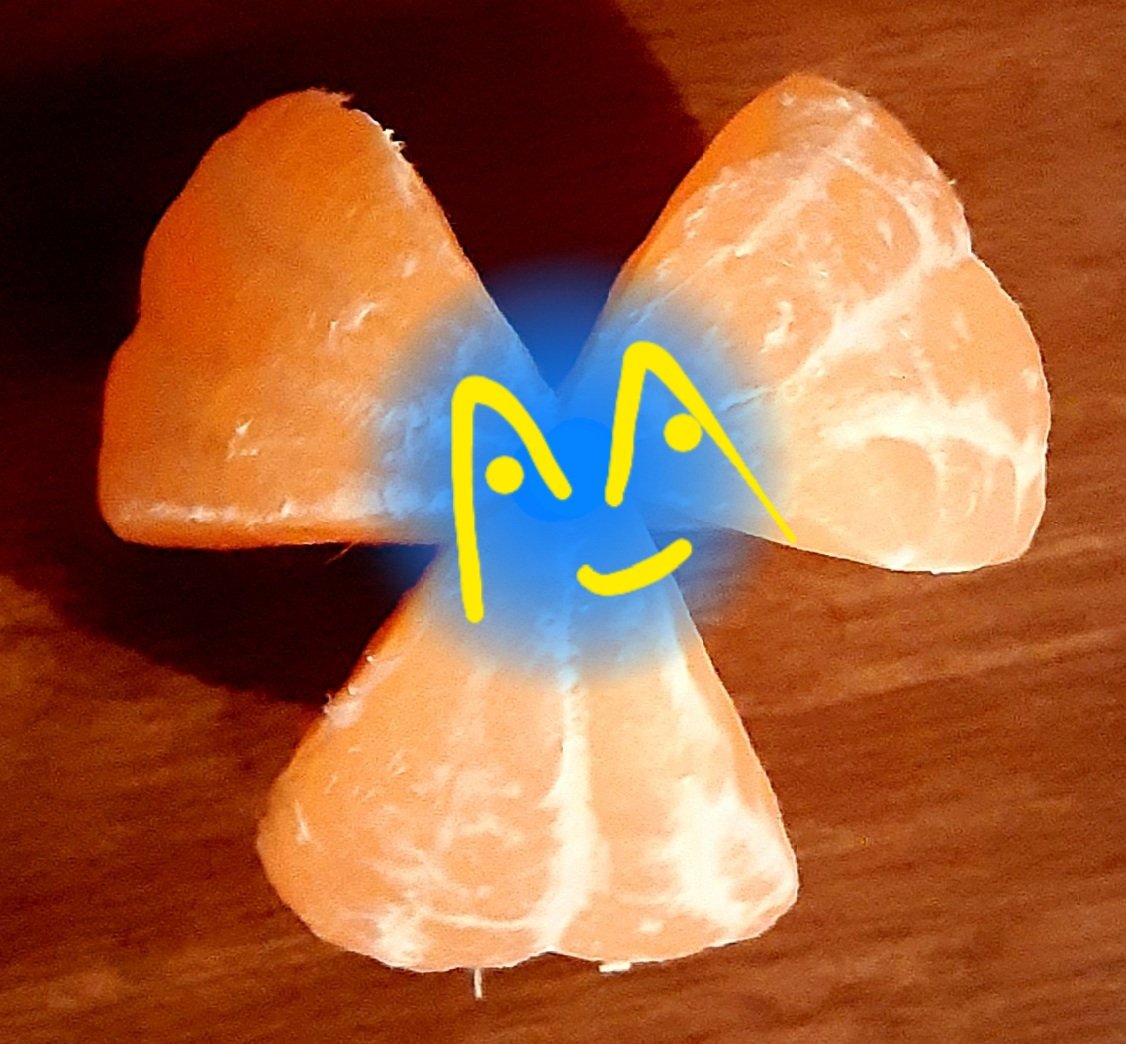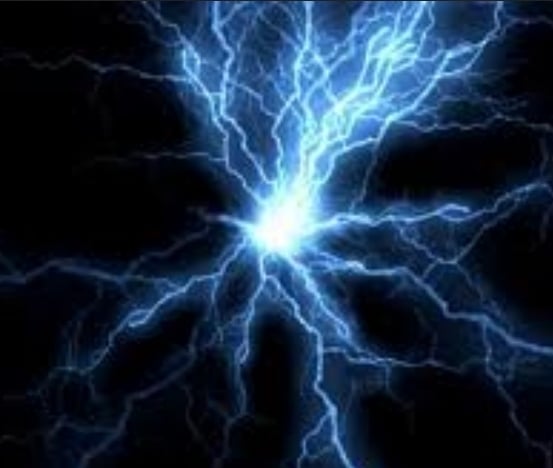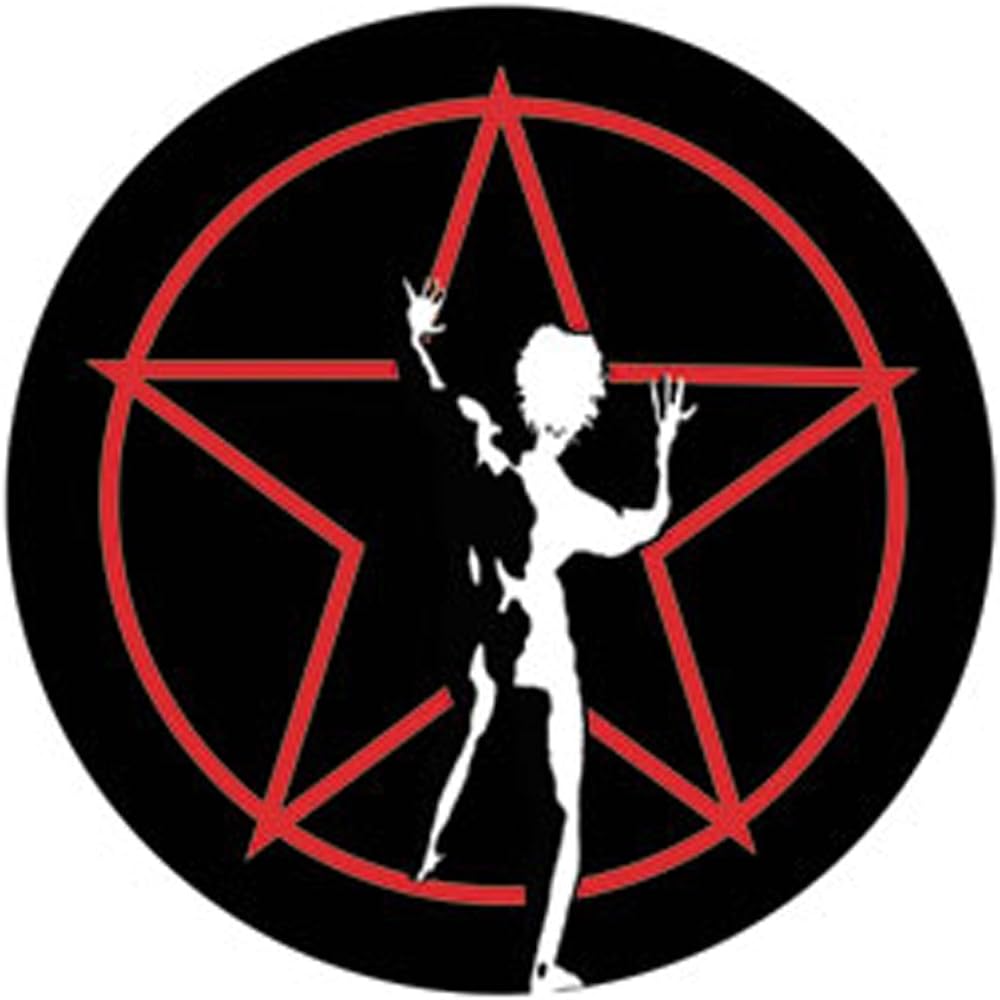The
cakeBigBang is a lie.
original source :
https://iopscience.iop.org/article/10.3847/2041-8213/ad1dddsee also :
https://en.m.wikipedia.org/wiki/Hubble’s_law
Hubble tension
In the 21st century, multiple methods have been used to determine the Hubble constant. “Late universe” measurements using calibrated distance ladder techniques have converged on a value of approximately 73 (km/s)/Mpc. Since 2000, “early universe” techniques based on measurements of the cosmic microwave background have become available, and these agree on a value near 67.7 (km/s)/Mpc. (…)
(…) The most exciting possibility is new physics beyond the currently accepted cosmological model of the universe, (…)Can someone give me the spark notes I started reading but I’ll never get through that or probably even understand all of it
As I understand it, there are two measures of cosmic distance/expansion rate in which we are pretty confident.
One is using supernovas as a measure. Since one kind of supernova has very particular characteristics, it is easy to calculate the distance. It is like knowing that everyone has the same kind of candle, if you see a bunch of lights around you, you could make certain assumptions about how far they are from you by how bright they are. Also, with more precise measurements, we can use the doppler effect to know how fast they are moving. We have observed the area around or Galaxy and have come up with a very precise measurement for how fast the universe is expanding.
The other measurement is by looking at the cosmic wave background. This is the “first” thing we are able to see after the big bang. I don’t really understand the details of this one, but scientists have also been able to calculate the expansion rate of the universe very accurately with this radiation.
As we have done more experiments to measure these two numbers, instead of converging on the same number, the results are actually diverging. Recent results have even made it so the error bars no longer overlap.
So, we have some big questions -
- Are our measurements wrong? There are no strong candidates for alternative understandings of how we measure things, so we don’t really know how.
- Are the expansion rates at the beginning of the universe and current times different? Maybe, but again, we don’t have any theories for why.
- Does the Universe expand at different rates in different places? Maybe, but again, we don’t have any strong candidates that we can test.
All of this is called the Hubble Tension. It is probably one of the biggest questions in cosmology currently.
Thanks this is both an uncomfortable and exciting thing to read.
It’s simple, imagine you’ve got two smart friends that both have an opinion about a TV show you didn’t watch - you can’t tell who is right but the fact they disagree suggests they might be wrong when they say you can’t have flying cars and time travel.
Basically,
Everything you know is wrong.
Black is white, up is down, and short is long
I wish I had more upvotes for the random Yankovic!
And everything you thought was just so important doesn’t matter. Everything you know is wrong. Just forget the words and sing along. All you need to understand is, everything you know is wrong.
Is it capitalism? Please let it be capitalism.
Do you ever take a break from the political stuff? Seriously man…. Take a rest.
I hope not, politics define almost every single moment of our existence. It’s like physics, but with more assholes.
I didn’t know you cared.
About you? I don’t. But I care about all the others that have to be annoyed by this shit. This isn’t a political post. How about taking a break and just enjoy things for what they are instead of your usual attempts to manufacture arguments.
Says the person who took the bait 😆
You think this was me taking bait? Nope. This is just calling out a troll.
Shill*
They consistently parrot russian and chinese talking points under the guise of being objective
Gotta be careful what you call them. They can get you banned.
We have a very limited view of the universe so it’s no surprise that our theories are often wrong or incomplete. The beauty of science is that when a theory proves inadequate, it gets replaced with a more complete one.
It’s always funny to me when people bring up how science was wrong in the past, as evidence for why we shouldn’t trust it now.
You know what replaced the bad science? Good science.
Or rather, we replace the bad science with the best explanations we can offer, right now.
I’ll take the plumb pudding model over “deity did it, stop asking questions” any day, because you can still do something useful with it.
Doesn’t even matter if our understanding is wrong and will be updated later.
Science is the best philosophy 💪
I’ve always liked the adage: science doesn’t tell us what’s true, only what isn’t.
We don’t know the best way to treat cancer, but we know leeches don’t work.
yeah, but it’s always a shitshow when someone brings alternate theories to the big bang. it’s almost like back in those days when they burned people for suggesting the earth may be slightly less flat than expected.
Don’t dare question dark matter in front of a physicist.
That’s because alternative models like MOND or string theory end up breaking more things than they solve. Fixing the leak in your roof is great, but doing so by breaking the living room wall isn’t really an acceptable solution.
In optimization problems, you can get stuck at a local maxima. It looks like any direction you go makes things worse. But the only way out of that is to try something that does make things worse and try refining from there to see if you can get to something better. Maybe that living room wall does need to come down in the process.
Isn’t string theory basically dead at this point?
It works perfectly as long as you assume there are a bunch of extra spatial dimensions that can’t be seen…
Maybe Maybe there’s something seriously wrong with the Universe? Why is it always US who are wrong?
Hey, it’s me, the Universe. I just wanted to say, this is no longer working for me. And if it makes you feel better, sure it’s not you, it’s me. Please don’t call.
I like to think that whenever we discover something new, the universe just got an update and we discovered the patch notes.
The universe is, frankly, a complete shitshow.
I’ve heard this has made many people very angry and is widely regarded as a bad move
I mean it’s got some valid points but let’s not get ahead of ourselves.
One day science will reach the Orphic understanding of the origin of the Cosmos.
Well, maybe at least this version:
Next after them, Epicurus introduced the world to the doctrine that there is no providence. He said that all things arise from atoms and revert back to atoms. All things, even the world, exist by chance, since nature is constantly generating, being used up again, and once more renewed out of itself—but it never ceases to be, since it arises out of itself and is worn down into itself.
Originally the entire universe was like an egg and the spirit was then coiled snakewise round the egg, and bound nature tightly like a wreath or girdle.
At one time it wanted to squeeze the entire matter, or nature, of all things more forcibly, and so divided all that existed into the two hemispheres and then, as the result of this, the atoms were separated.
- Epiphanius of Salamis, Panarion book 1 chapter 8
Very fun in the context of Neil Turok’s CPT symmetric universe theory as an explanation for the baryon asymmetry problem, so its discussion of matter being squeezed and then splitting into two which divided the particles may end up on point even if incorrect in their interpretation regarding the atmosphere.
Over and over again. That scope is really opening things up.
It was the same for the Hubble telescope back in the day (and still!)
It’s almost like cephid variable measurement is a shitty metric for measuring universe expansion because you’re not actually measuring the edge of the universe just the rate of travel of two objects.
How can you measure the edge of the universe? Firstly anywhere you hold the tape you are in the universe secondly its expanding faster than the speed of light which is a limit for movement without space not the expansion of space.
Anyone here an expert on Scalar-Tensor-Vector Gravity (STVG), Tensor-Vector-Scalar Gravity (TeVeS) or f® gravity?
Yay, progress!
But maybe the measurement methods are not correctly understood either, as profen by the brightness of white stars used to determine age, lately.
This is amazing news. It’s like being shown that Neutonian physics are wrong, so now we have the ability to come up with a better model, then massive advancements in technology can occur.
I’d like them to look for repeats of galaxies. Galaxies that may be the same but slightly different or in different parts of the universe. If the universe was its own black hole we might see like a sort of kaleidoscope effect
I believe that would be a Torus-shaped universe that could produce that effect, basically a donut where space loops back in on itself. I think it’s something that’s been considered, though it sounds as if there’s no evidence for or against that idea, and it’s not considered likely.
My money is on a dodecahedron.
The trouble with that is the difference in time. Since the light has to travel such a vast distance, multiple images of the same galaxy will show different stages of maturity. Even the stars will have been recycled. It would be extremely difficult, if not impossible, to ever demonstrate that two galaxies separated by billions of light years are actually the same galaxy in a curved Universe.
We did find out that Newtonian physics is wrong. Einstein got famous for it and we now use general/special relativity and quantum phsyics.
No, Newtonian physics works just fine. Unless things are too big, too small, too fast, or too slow.
At least that’s what a meme I once saw said.
I think the best way to say it is, relarivity can reduce to Newtonian at small (but not sub atomic) scales, or that Newtonian mechanics are incomplete
Isaac Newton made some incorrect assumptions. In most situations on earth the error is small enough to ignore (you don’t need to worry about time dialation to calculate the projectile path of a thrown rock), but there’s depreciencies in the cosmos (like mercury’s weird precession). So in a sense, elementary mechanics never was correct, but it was the best humanity had for awhile until Einstein’s relativity and it’s still useful in many not-extreme contexts.
Really, until we actually find dark matter, we can’t say for sure that relativity is correct either, but that’s just science.
I thought we may have found dark matter already, but we lack the ability to measure it and confirm?
We noticy it’s effects on baryonic matter, but have no known way of detecting dark matter itself. It’s a bit like how a fisherman can know that there is a large fish in the pond by the giant splashes and ripples in the water, but he can’t catch it because it has zero interest in any lures or bait he uses.
Now that there is an understandable analogy.
So it works fine on human scales, but for most of the universe it is inadequate. That means it’s wrong. Quantum physics and relativity are also wrong since he are unable to reconcile the two, despite them both being the best models we have for their respective scales. We have known for the past century that we have only just begun to understand the universe, and that all our models are irreconcilable with each other, meaning that they are ultimately wrong.
Just because a model is useful doesn’t mean it is right.
I think OP knew that. He was just repeating what he read in a meme.
I agree with the essence of your point but personally I’d never use the word “wrong”, only incomplete. Seems weird to call Newton’s laws “wrong” when the only reason that we are willing to accept GR is that it reduces to Newton.
All models are wrong. Some models are useful.
I prefer mine:
literally every model is a metaphor and not a true representation of the actual phenomenon it’s modeling.
Why use many words when few will do?
The map is not the territory
It’s not so much that it reduces to Newtonian predictions but that at human scale and energy levels the difference between Newtonian and general relatively is so small it’s almost impossible to tell the difference.
What you’re describing is literally what it means for general relativity to reduce to Newtonian mechanics. You can literally derive Newton’s equations by applying calculus to general relativity. In fact, if you ever get a physics degree, you’ll have to learn how to do it.
Agreed, but it leads to people who are less knowledgeable to draw the wrong conclusions.
Basically for just about anything you want to do on Earth Newton works perfectly fine. You can send people to the moon using nothing but Newton. Two big things you need Einstein for is the orbit of Mercury and GPS satellites. So from a pure science point of view Newton is wrong or maybe incomplete. From a regular Joe point of view Newton is dead on. By proclaiming Newton is wrong, it leads to people concluding that all science is wrong, because there is always someone working on the next iteration. So people think vaccines are dangerous, wearing masks is dumb, herbs and spices cure cancer, global warming is fake and homeopathic shit does anything except remove money from their wallets. Because what do scientists know, they’ve been wrong all the time in the past.
Newton is not wrong, it’s just incomplete for some very niche things. And Einstein fixed all of that so we’re all good.
In reality it’s good to always be looking to disprove something and create new and better knowledge. But only if that’s your job and only for very niche things. We’ve got the basics down for most things on Earth and there is no reason any regular person should doubt that.
You see this thinking in science too. Dark matter has always struck me as an awful solution to a model breaking down. It’s basically “the numbers don’t add up so let’s add a fudge factor to make it say what we want”. But you’re generally considered a kook for questioning it now. People will spout a bunch of big words and hope you shut up if you do.
It’s called dark because we can’t see it, and matter because it interacts gravitationally. There is nothing wrong with the term and the model of it even if we don’t fully understand what the hell exactly it actually is and most importantly why it actually is. It’s literally how science works. We don’t know what the hell quantum probabilities and all the weird particles and fields mean on a metaphysical level either but QFT is the most tested and predictively powerful theory of science ever made. Is it complete? No, we may even never find the theory of everything. But it doesn’t make our discoveries wrong.
I think it’s more a matter of, “We know there’s something that’s causing an effect, but we can’t see it or fully explain it… yet.” There’s something in the science and observations that’s just not lining up the way it should. There are some ideas that have floated around that say that dark matter isn’t necessary, it’s just a misunderstanding of one factor or another, but nobody has really been able to nail the question yet, so it persists.
It’s more than that. There’s something that doesn’t add up, but if we assume the answer is “dark matter”, we can make predictions about it, that can guide us toward proving or disproving. Similarly, if we assume it’s one of the other theories, we can make predictions on what it must be like.
Dark matter is most straightforward because we understand best how matter acts. How much more matter do we need for the observations to make sense, based on current understanding? Ok, what could that matter be that acts gravitationally but we can’t see? How can we detect that?
Dark matter has been supported by various observations and is the best explanation we have. It’s not the most widely accepted model just by pure faith, you know.
I have to admit I never liked it too much myself, but what do I know? There is an alternative theory, but it has its own problems.
Be careful saying homeopathy only removes money from wallets. Yes it does that but it can be worse. Most of the vials are just water but any with a 1x or 1c designation actually do have some of the herbal element remaining and can cause problems.
Mmmm, Earth Newton…
By proclaiming Newton is wrong, it leads to people concluding that all science is wrong, because there is always someone working on the next iteration
I’ve never had sympathy for this line of thinking. Is the average person truly too ignorant to understand that science is a constantly developing process of better understanding our universe, not some set of unimpeachable rules carved into stone tablets once and forever? The fact that science can be updated, changed, revolutionized, is what makes it powerful.
If people need to be ‘protected’ from that fact, there is something fundamentally wrong with the way science is taught in schools. I can’t accept that the average person can’t comprehend such a simple idea that would take less than an hour to convincingly communicate.
I’ve never had sympathy for this line of thinking. Is the average person truly too ignorant to understand that science is a constantly developing process of better understanding our universe, not some set of unimpeachable rules carved into stone tablets once and forever?
YES because often times the opposing model is the Bible, which is updated very irregularly and people will form sects over a single differing interpretation of a single passage.
Changing your mind / learning new information can be construed as the super-hated “flip-flop”.
Unfortunately, the illogical are immune to logic. No amount of it will be effective.
It’s less that Newton is wrong and more like it’s an approximation. Things always get more complicated because we are learning more about everything all the time, but for simple day to day things Newton is fine to be used and even taught.
You could also say it’s important from a historical perspective, learning how we got from Newton to bigger and better things is important too.
Yes, the average person is ignorant of stuff that need to be updated once in a while. There is something wrong with the current form of education. And you need to accept that understanding doesn’t come easy.
If you can’t do that last part, well, there you go. Same thing for the average person.
deleted by creator
all it took to convince them evolution is completely wrong is a couple paragraphs about Lamarck and giraffes and Haeckel and embryos
That’s incredibly shocking and concerning.
I think you communicated it well in two paragraphs.
It’s inaccurate, not wrong. Framing things in right and wrong misrepresents scientific progress in a way that leads to ridiculous conclusions like some post-modernist post-truth philosophers came up with.
Conversely, just because a model is wrong doesn’t mean it’s not useful.
Some relevant reading: The Relativity of Wrong, by Isaac Asimov.
In fact, Lord Rutherford said that “ALL models are wrong, but some are useful” 🙂
While we’re talking about scientific nobility…
“In science there is only physics; all the rest is stamp collecting.”
– Lord Kelvin
I think it’s better to say that Newtonian physics is incomplete rather than wrong.
Bingo. All models are “wrong”, good models are useful despite being “wrong”. Relativity is wrong too since it can’t account for anything quantum… Relativity isn’t better, it’s just more accurate under certain conditions - but outside of those conditions it’s more complex than it needs to be, and Newton’s models are good enough.
Ah. So it’s relative.
Ultimately, all science and all knowledge about the universe around us is always going to be relative and incomplete. They are all just models. The only model that’s complete is the universe itself, and we can’t cram that into our tiny brains.
Correction. We can’t cram that into our tiny brains and still be “human”. We would likely be something on a closer level of, say, the “Q” from Star Trek. Or possibly Urza from Magic the Gathering. Which, based on my understanding of the lore of both IPs, I would rather be Q than be Urza.
I think that’s the point they were making.
Neutonian physics are wrong
Dangerous way of putting that since we have so many easily weaponized idiots who will carry that water, a better way to say it would be “our understanding of neutonian physics is incomplete at the moment”
I agree, it is more accurate that way. English is not my first language, so I missed that detail. In South Africa, we also don’t have a significant anti-science movement, so it does not always occur to me naturally. The scientific approach is generally well respected and understood here.
Good riddance, the answer can never be too simple.
The human need for ‘constants’ may already be too simple. Gravity for example is treated as a constant value in Physics but is actually variable.
Your understanding of what constitutes “Physics” (tip: it’s not a bunch of kids in a classroom) tells me that we can safely ignore your opinion.
deleted by creator
I might have missed something, but AFAIK, gravity is the same everywhere. Bigger things, bigger gravity, sure, but two equal things in different locations don’t have different gravitational attraction
We abandoning materialism yet?
Not til we got them sweet, sweet asteroid mineralz. Parties responsible for that will dictate the direction humanity goes, imo
“The most exciting phrase to hear in science, the one that heralds new discoveries, is not ‘Eureka!’ but ‘That’s funny…'” --Isaac Asimov
TIL Columbo was the ultimate scientist.
“Oh, just one more thing…”
The scientific spirit at work!
Dogulas knew:
I always said there was something fundamentally wrong with the universe.
– Arthur Dent, the Hitchhiker’s Guide to the Galaxy Radio Series.
Sounds more like Arthur knew…
It’s like the stars when observed at veryx2 far distance they start to behave weird. Blinking a bit faster than normal this might cause the reason for much faster expansion when calculating. Entropy suppose to be improbable right but at far distance all those improbable they probably all eventually add up. Just my thought anyway.
Have you ever had a dream that
That you, um, you had, you’ll, you would
You could, you do, you would you want you
You could do some, you…
You’ll do, you could you, you want
You want him to do you so muchYou could do anything, do anything
Have you ever had a dream
You could do anything, do anything
Have you ever had a dream
You could do anything, do anythingLmao
Perfect!

















